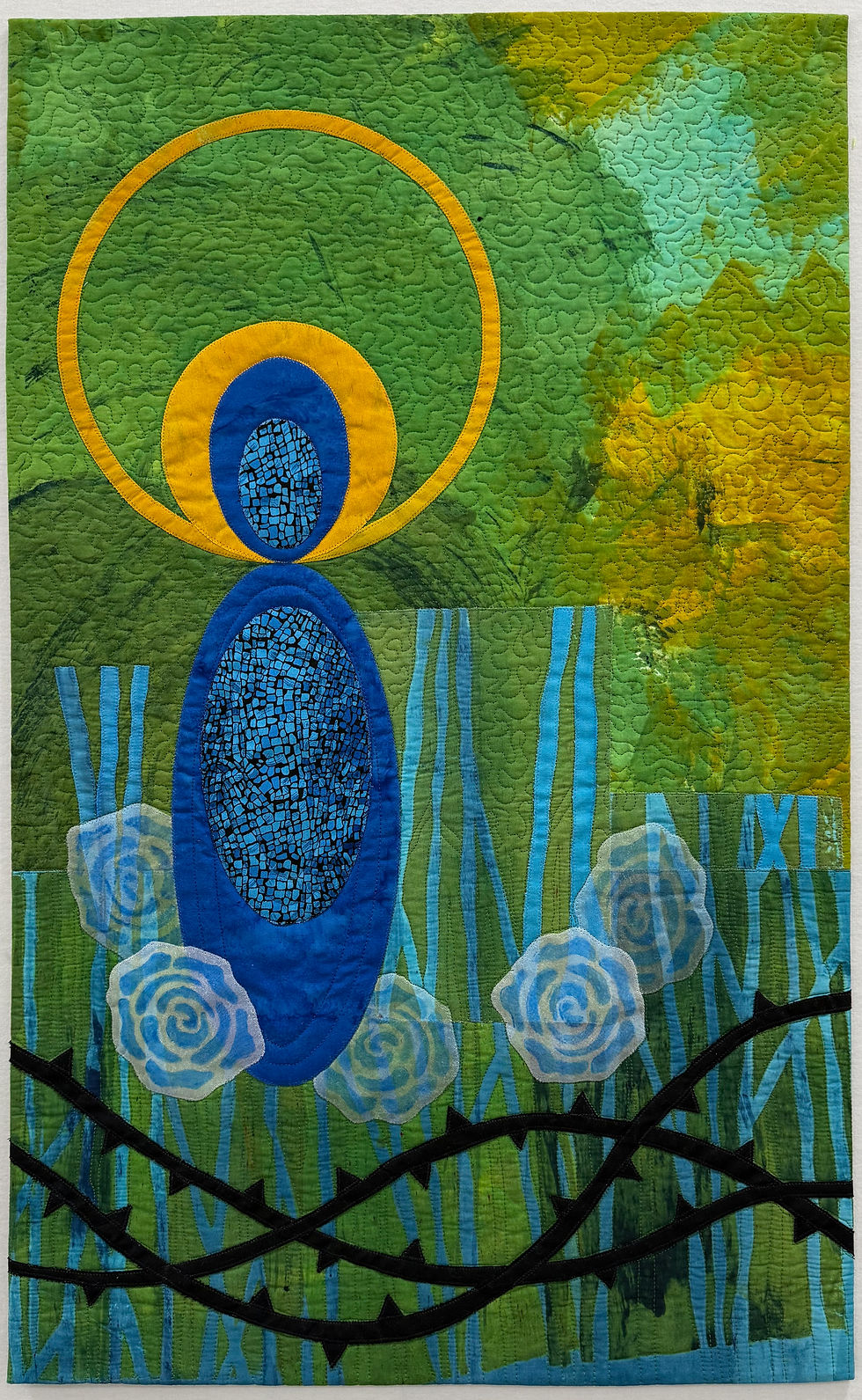Nature's Hero
- Cindy Brendzel
- Sep 20, 2022
- 2 min read
Updated: Oct 19, 2022

I created this piece using repurposed materials. The base is commercial batik fabric measuring 24 x 32 inches. For the tree I hand-cut strips of pre-owned men’s ties. I glued the strips on the base and machine stitched them in place. The leaves are made with sari silk. I cut the silk in diagonal strips, then I gathered and clipped them to create texture, and stitched them down.
I call trees “Nature’s Hero” because they benefit our planet in so many ways. Trees eat greenhouse gases that cause climate change. Their food-making process, photosynthesis, absorbs carbon dioxide from the air and stores it in its wood. Trees and plants will store this carbon dioxide throughout their lives, helping slow the gas’s buildup in our atmosphere that has been rapidly warming our planet. Also, the leaves remove the kind of air pollution that is most dangerous to our lungs: particulate matter. This pollution comes from burning fossil fuels, and can reach dangerous concentrations in cities across the world. Tree’s leaves filter this dangerous pollution, but only when they’re planted near populated areas because most of the filtration occurs within 100 feet of a tree. More trees in cities, especially in lower-income neighborhoods close to highways and factories, can reduce ailments like asthma and heart disease that cause 5% of deaths worldwide.
A healthy tree can also boost our mental health and improve our physical health. Studies show that time in nature—like a walk among the trees in a city park or forest—correlates with a drop in anxiety and depression. And it doesn’t take a lot of time in nature for the feel the effect. When we have access to nearby green space it encourages us to move around and exercise, and can lower the potential for obesity while improving our overall health.



Comments